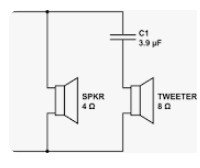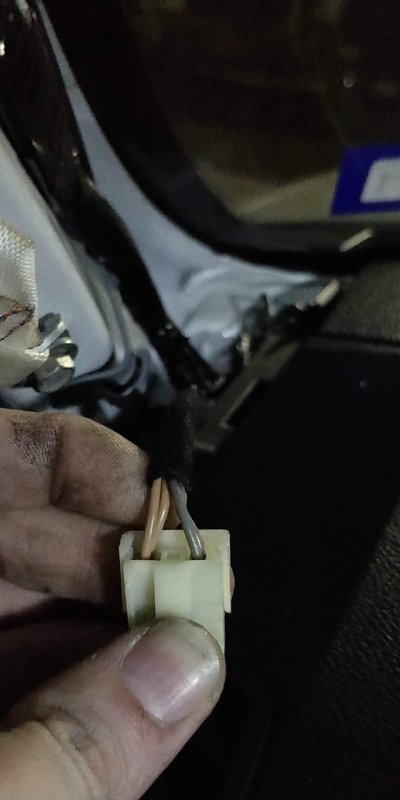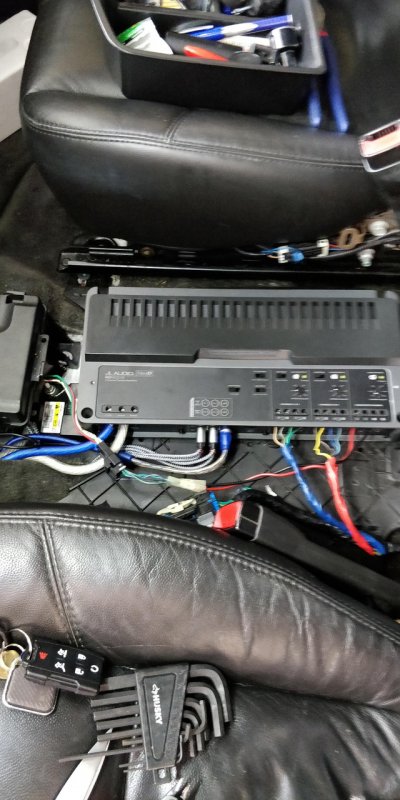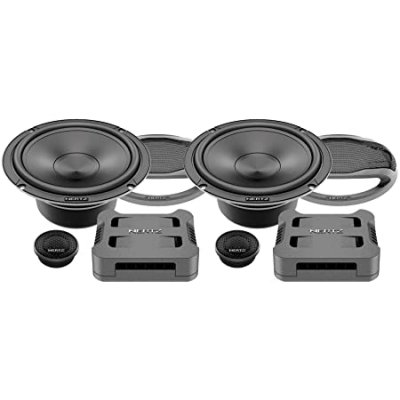Hey, thank you so much for replying! You are indeed correct, the tweeter has 4 wires running to it and the 6.5" woofer in the door only has 2. After taking the A-Pillar tweeter out, I can see that there is a capacitor glued to the side of the tweeter.
With this being the case, what would be the best solution to install new component speakers? Do you think it would be best to take the 4 wires going into the tweeter, split them up, run them into the crossover, then split the tweeter and woofer from the crossover?
Thanks!
What you found is the most common configuration for a 1 stage/order high pass filter for a tweeter (capacitor literally glued to the tweeter, with the incoming + wire coming from the + speaker output terminal from the amp connected to the capacitor, and then the other end of the capacitor connected to the + terminal on the tweeter (often identified by a red or other color dot of paint next to the + terminal). Since the capacitor is non-polarized, it does not matter which end of the capacitor gets connected to the amp side or to the tweeter side.
I am assuming that you are going to place the new tweeter directly in the existing A pillar tweeter location and the new midrange speaker placed directly in the door's existing speaker location. You will need to identify at the A pillar which 2 wires are coming from the amp, and which 2 wires are going to the 6.5" door speakers. You can do this with a simple ohm meter, by connecting one lead to the wire on one of the tweeter terminals, and then connecting the other lead of the ohm meter to one of the 6.5" door speaker terminals. Using this method, you should be able to identify which 2 of the 4 wires connected to the tweeter go to the 6.5" speakers, including which wire is the + wire, and which wire is the - wire (one of the terminals on the 6.5" speaker will probably also be identified with a dot, indicating that one is the + terminal).
If your new component system still has a simple 1 stage/order high pass filter in the form of a capacitor, then when installing the new tweeter, connect the + wire from the amp to BOTH one side of the capacitor and to the + wire running to the 6.5" door speaker. Then connect the other side of the capacitor to the + terminal of the tweeter. Connect the - wire coming from the amp to BOTH the - terminal on the tweeter and the - wire running to the 6.5" door speaker.
If you are installing a more sophisticated crossover network with separate midrange and tweeter output terminals for each channel, there are a few ways to wire it, depending upon if you want to dig down to expose the amp and and directly access its connections, or if you want to try to repurpose existing wires and minimize long runs of new wire. Again, there is more then one way to accomplish this, and some folks have specific preferences on these installations.
If it were me doing the work, I would suggest the following, as I do not like to dig down any further than I have to, to access buried components, like an amp. Find a place out of sight to install the crossover network (hopefully, up under the dash). Then, in the A pillars, I would identify which 2 of the 4 wires are coming from the amp, and of those 2 wires, which wire is the + wire and which wire is the - wire. You should be able to identify this by exception, after you have used the ohm meter process mentioned above to identify the 2 wires going to the 6.5" door speaker.
I would then run 6 new wires (3 pairs of speaker wire) from the crossover's location to each A pillar location. This should be very easy to perform, using an electrician's wiring snake, by snaking all 3 pairs of wires at once. 1 pair will be used to redirect the amp's output wires from the A pillar to the crossover's input terminals, and the other 2 pairs will connect the crossover's appropriate output terminals to the tweeter terminals in the A pillar and to the wires going to the 6.5"door speakers. Keep the + and - wires properly aligned for all 3 pairs of wires.




